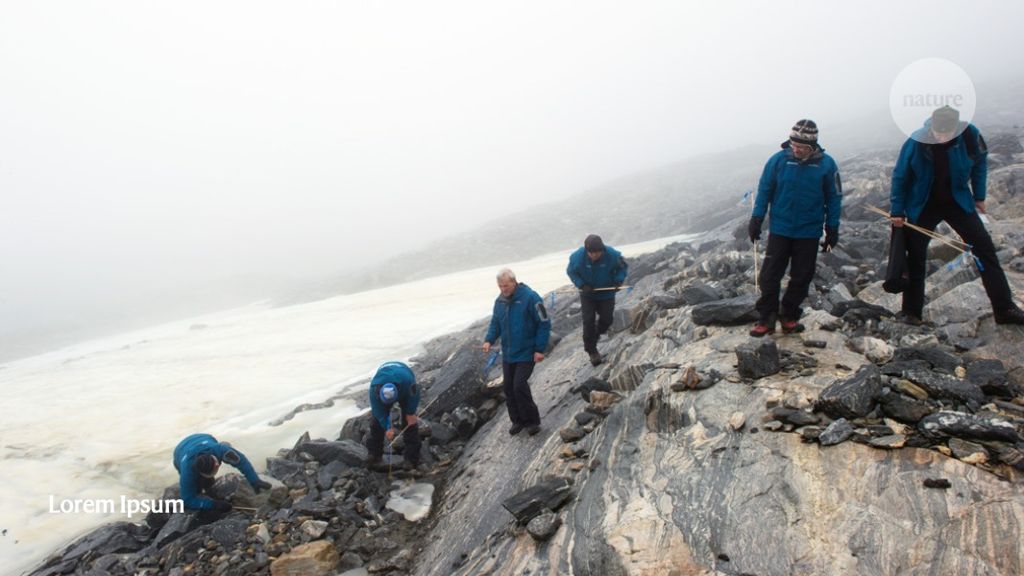Researchers survey a Norwegian mountain pass, where melting ice has yielded a hoard of items lost or discarded by people travelling centuries ago. Credit: Johan Wildhagen/Palookaville
Archaeology
A trove of ancient artefacts that melted out of a Norwegian glacier have revealed a route that Vikings and others used for centuries for travel and trade.
James Barrett at the University of Cambridge, UK, and his colleagues surveyed a receding ice patch at Lendbreen glacier, in the mountains of southern Norway. From 2011 to 2015, the researchers collected hundreds of artefacts, including horseshoes, arrows and walking sticks, as well as everyday items such as clothes and shoes.
The team determined the age of 60 of these objects, and discovered that the Lendbreen pass was used increasingly for both local travel and long-distance trading from around ad 300 to ad 1000. The findings suggest that people crossed the pass in times such as spring and early summer when the rocky terrain was covered by thick snow, which would have made travel with pack horses easier.
After ad 1000, traffic through the pass declined, probably as a result of economic changes, colder winters and, in the fourteenth century, the outbreak of bubonic plague, the researchers say.


